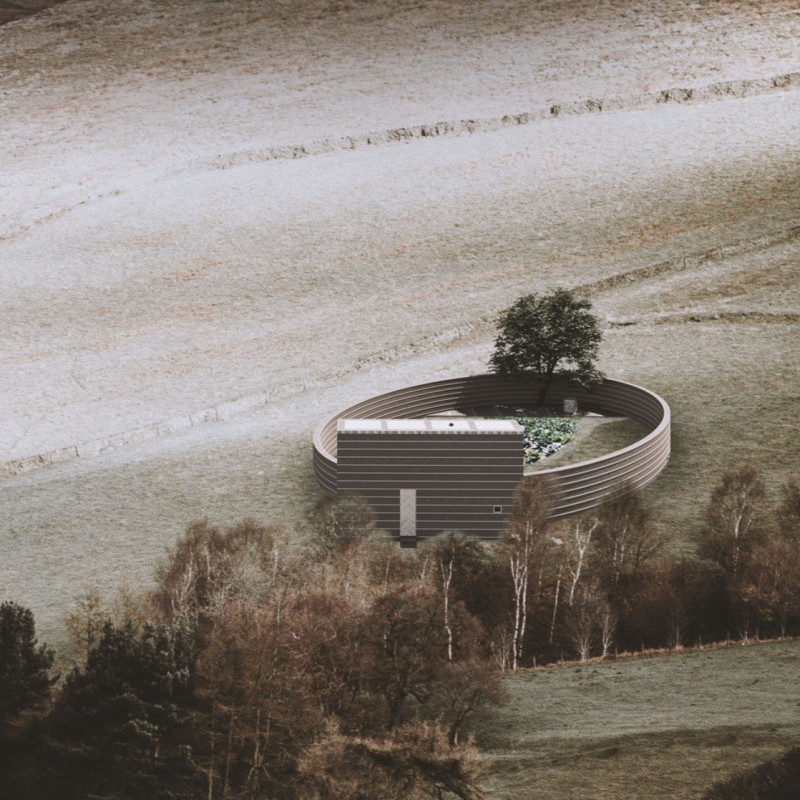5 key facts about this project
Nomad House is a residential design located in Dobrogea, Romania, catering to the needs of a family of immigrants. The structure has a minimal footprint that emphasizes a close connection to the surrounding landscape through a central courtyard-garden. This garden space not only enhances aesthetics but also serves as a source of food and community interaction, highlighting the integration of living spaces with nature.
Design Concept
The architecture focuses on creating an environment that encourages both privacy and community. Living spaces are arranged around the courtyard-garden, allowing natural light and views of the outdoors to fill the home. This setup promotes well-being by ensuring easy access to nature, making the space comfortable and inviting for its residents.
Materiality
Rammed earth is the primary material used in the construction of the house, a method rooted in local building traditions. This material provides significant thermal mass, which helps regulate indoor temperatures throughout the year. Mud bricks complement the rammed earth walls, adding to the insulation and tying the design to regional architectural practices. The choice of these materials reflects a sustainable approach, utilizing resources that are readily available in the area.
Sustainability Strategy
To enhance energy efficiency, the design incorporates geothermal energy systems for heating and cooling. The rammed earth walls act like thermal batteries, storing heat in winter while allowing for passive cooling in summer. A skylight facilitates this cooling process by enabling hot air to escape. Additionally, a wind turbine harnesses the strong winds common in the region, generating electricity to meet everyday needs and further supporting sustainability.
Final Detail
The courtyard-garden is a central feature that offers a productive space for growing vegetables alongside a fountain and mature trees, creating a calm retreat for family members. This thoughtfully designed outdoor area plays a key role in daily life, providing both utility and tranquility.



















































